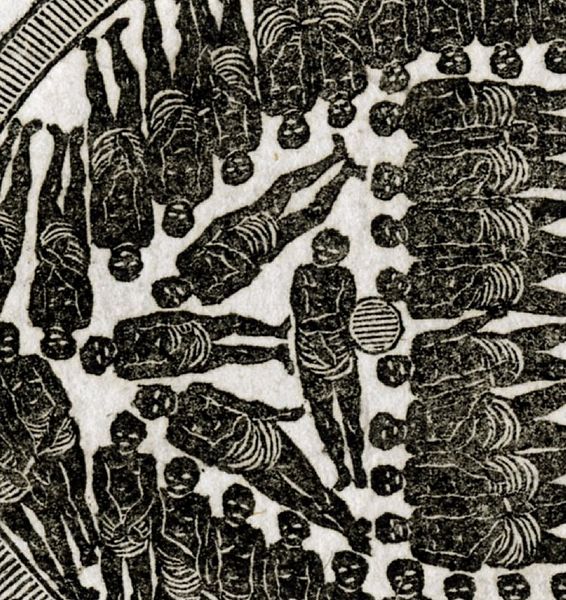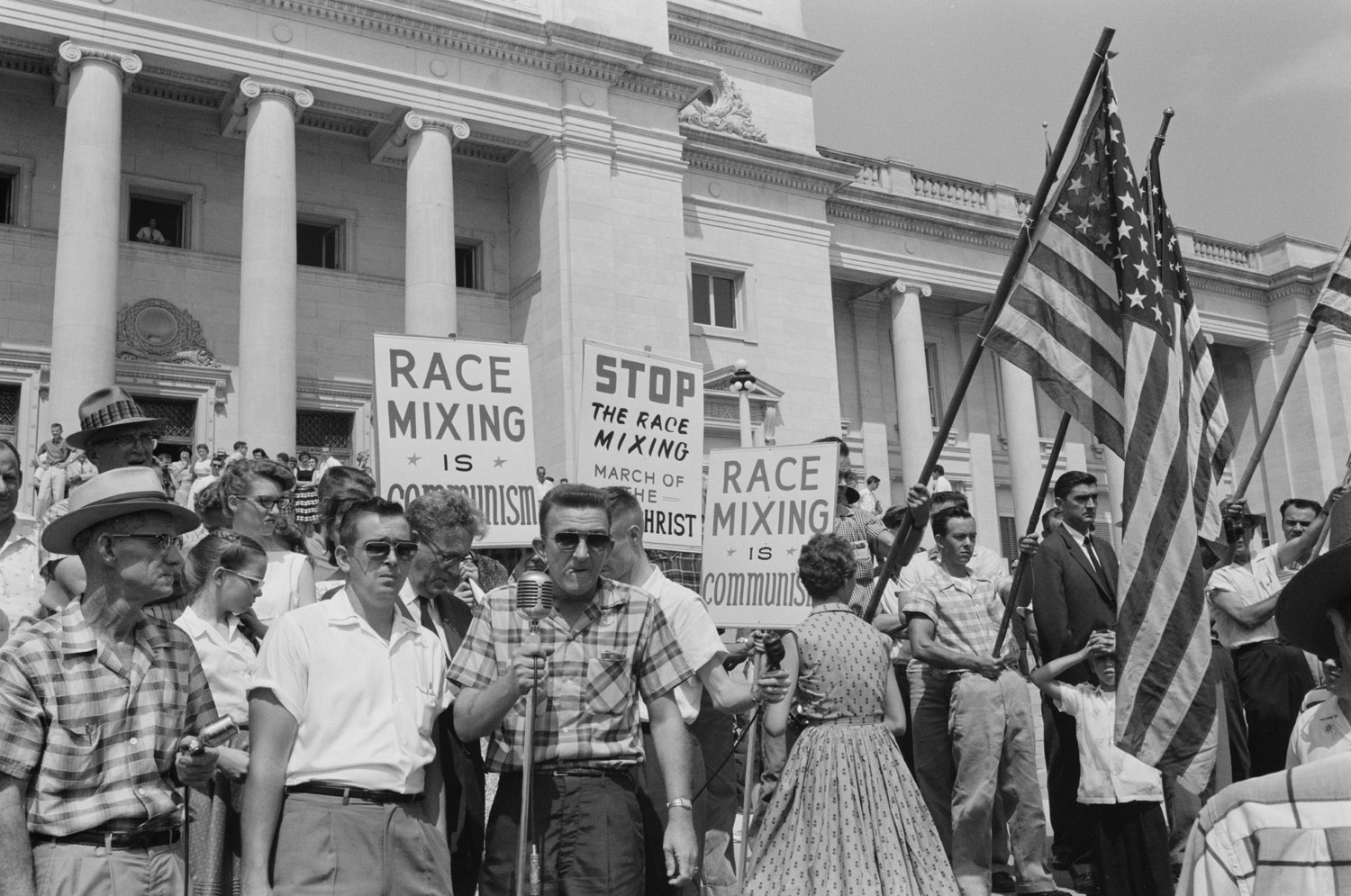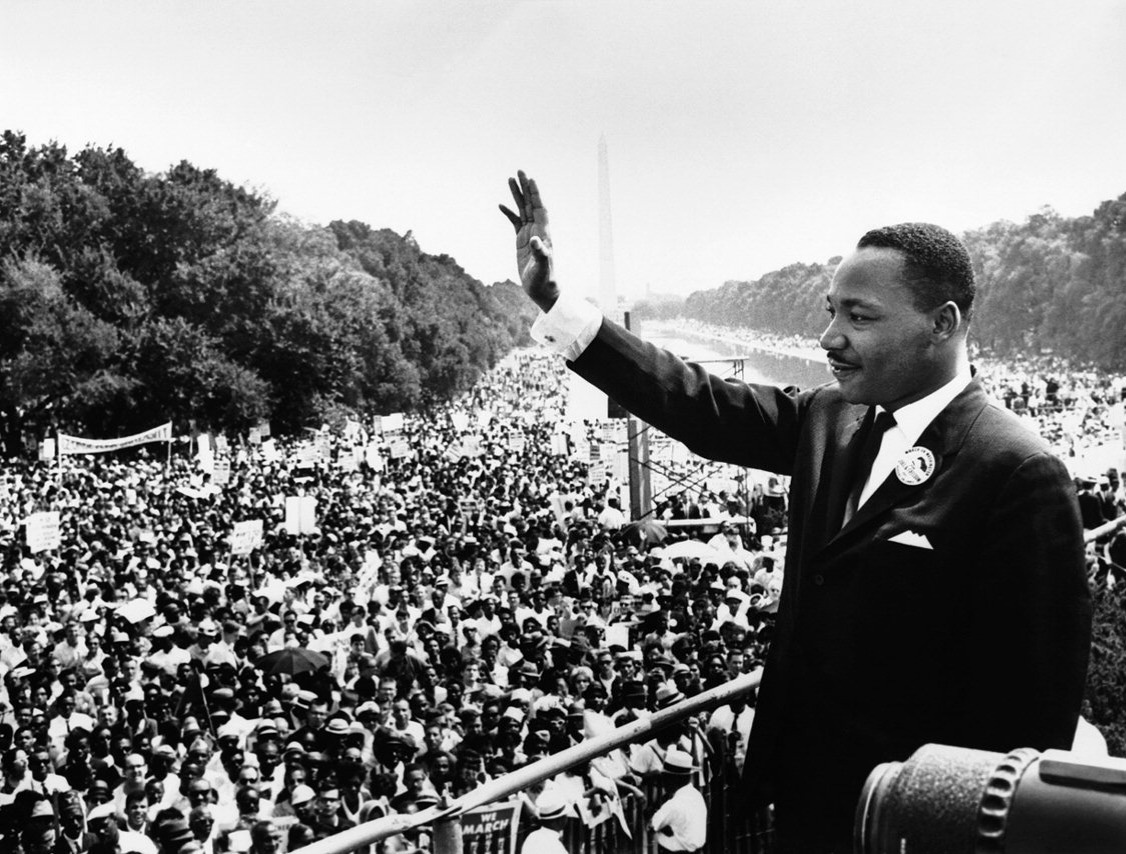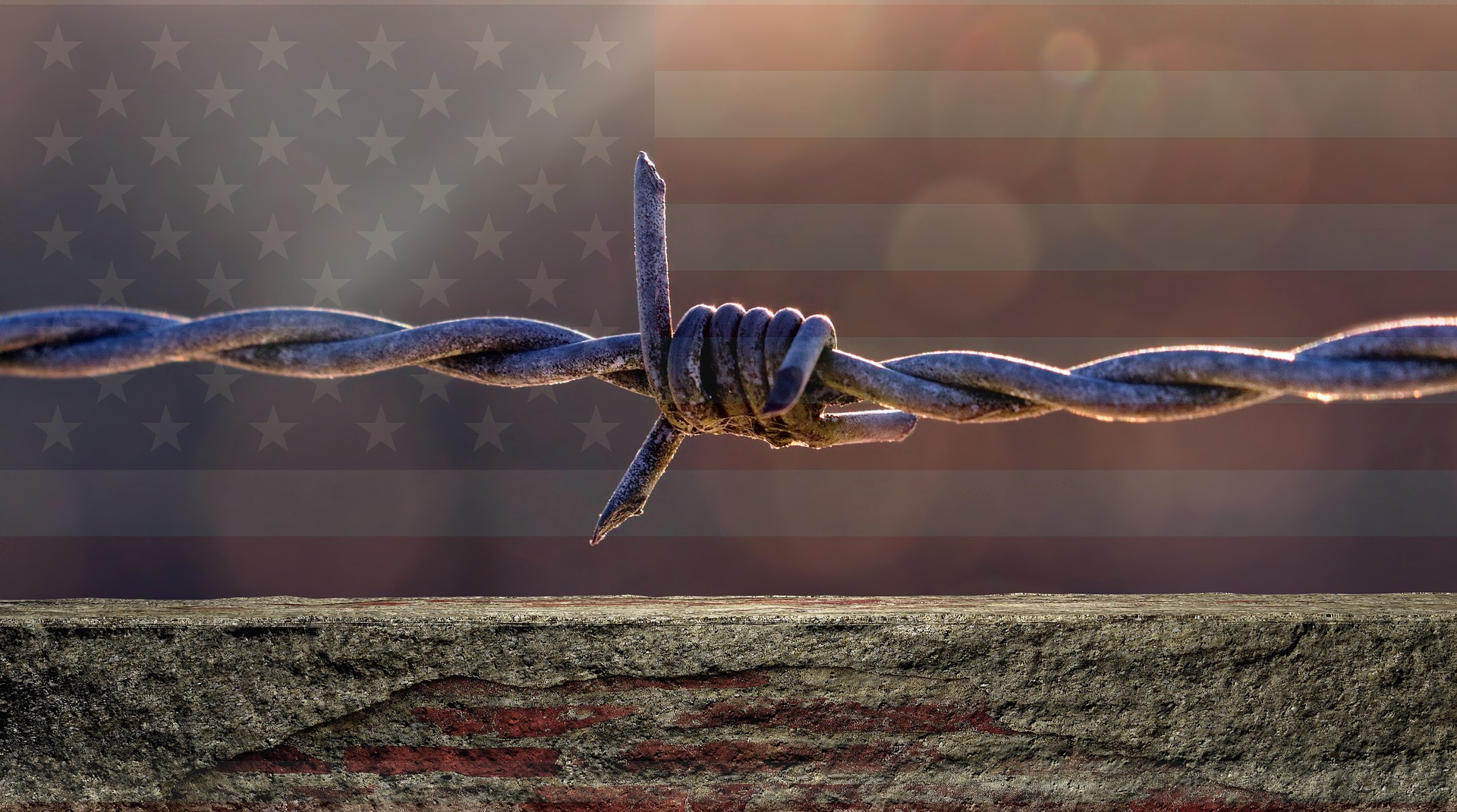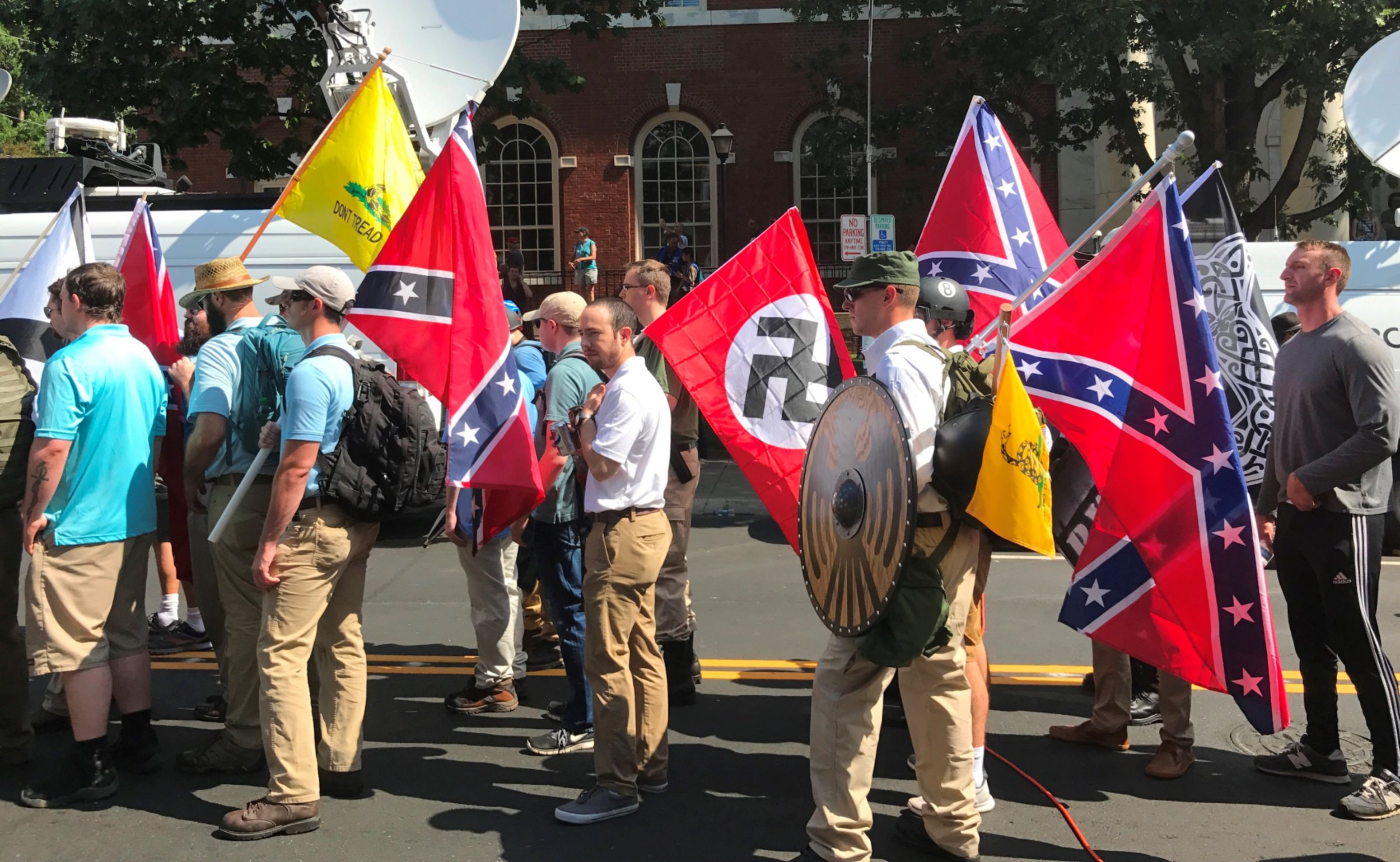Race and Employment
Photograph: Employment advertisement in The Tacoma Times, December 21, 1912. It reads, “Only Americans, Scandinavians, Irish, English, or Germans need apply.” Photo credit: Liam Hogan | Twitter.
Introduction
The following resources engage the problem of racism in American employment patterns, such as people’s opportunities to work, how they are treated at work, and experience of work. See below, or also check out more general issues with Labor and Labor Policies.
Conversation Stations
These are the images used in artistic physical displays. They are survey questions and conversation starters that are topically and thematically organized. They demonstrate how Jesus is relevant to each topic or theme. You can also just view the images on your device. If you would like, see all our Conversation Stations; below are the ones that relate to the topic of Race.
Whose Justice? (and instructions and Christian Restorative Justice Study Guide)
Whose Justice? for Harvard Law School
Is a Good Friend Hard to Find? (and instructions and conversation tree)
What Can We Do About Evil? (and instructions and conversation tree) and smaller version and brochure version
Que Podemos Hacer Sobre La Maldad? for the Asociacion Dominicana de Estudiantes Evangelico, 2014
Does the Good Outweigh the Bad? (and instructions)
Race What's the Problem? (and instructions) and brochure version
Messages and Essays on Race and Employment
A series of blog posts where we explore many issues as Christian heresy, for which Christians must take responsibility in the frame of repentance. We have designed a study guide to accompany the blog posts. Please consider using it for personal reflection or discussion in your family, church, organization, etc. Blog Post #15 in the series is about industrial policy, and how job creation, infrastructure development, and technological development have been largely publicly funded, government-led efforts through the Department of Defense or the National Institutes of Health. All these efforts have racial implications and impacts. And the myth of meritocracy — that individual job-creators and hard-workers — is used against minorities as if they did not work hard enough.
Other Resources on Race and Employment
Heller School for Social Policy and Management (Brandeis University) various papers; see Work and Opportunity Pathways
Editors, Asa Philip Randolph (Encyclopedia Britannica), trade unionist and black civil rights leader who founded the Brotherhood of Sleeping Car Porters
Angela Y. Davis, Women, Race, and Class. Random House | Amazon page, 1981. Essential reading. Davis spotlights the forms of women’s work, by race and ideology, from the times of slavery to the late 20th century. She notes how Black people formed their own labor organizations because of the racial discrimination they faced in White organizations. Importantly, Frederick Douglass was the most important male spokesman for women’s suffrage and economic well-being in the 19th century, as W.E.B. DuBois was in the 20th.
Jim Powell, Why Did FDR’s New Deal Harm Blacks? Cato Institute, Dec 3, 2003. features the Wagner Act (National Labor Relations Act) of 1935, which legally gave labor unions the right to exclude black workers.
Gordon Andrews, Undoing Plessy: Charles Hamilton Houston, Race, Labor, and the Law, 1895-1950. Cambridge Scholars Publishing | Amazon page (2014). Charles Houston, Dean of Howard Law School, mentor to Thurgood Marshall and many other Black attorneys and scholars, “understood the difficulties facing black workers in America, and, by marshaling his considerable skills as an attorney and leader, was able to construct a strategy that fought for full integration by changing the laws of the United States at the highest level. With unparalleled success, Houston developed a three-pronged strategy from 1925–1950 that focused on the courts, the workplace, and politics, securing the expansion of labor rights and civil rights for African Americans. Better than most, Charles Houston understood that the right to work was inherently necessary to achieve real, not just perceived, freedom.”
Richard V. Reeves, Edward Rodrigue, and Alex Gold, Following the Success Sequence? Success is More Likely If You’re White. Brookings Institution, Aug 6, 2015. When black people finish high school, refrain from having children before marriage, and hold down a steady job, they are still less likely than whites to escape poverty (59% vs. 73%). Michael D. Tanner, Is There a Sequence for Success? Cato Institute, May 9, 2018. adds a very significant qualification, “Until we deal with such issues as a biased criminal justice system, a failing public school system, and barriers to job creation, let alone systemic racism and gender bias, the success sequence seems more sideshow than main event.”
Noel Gutierrez-Morfin, U.S. Court Rules Dreadlock Ban During Hiring Process Is Legal. NBC, Sep 21, 2016.
Jeff Guo, The Real Secret to Asian American Success Was Not Education. Washington Post, Nov 19, 2016. and Jeff Guo, The Real Reasons the U.S. Became Less Racist Towards Asian-Americans. Washington Post, Nov 29, 2016.
Frank Hyman, The Confederacy Was a Con Job on Whites. And Still Is. McClatchy, Mar 6, 2017. A helpful perspective on plantation capitalism and a two-tier, racialized labor force.
Shannon Luders-Manual, Race and Labor in the 1863 New York City Draft Riots. JSTOR Daily, May 4, 2017. “In July 1863, over a thousand Irish dockworkers rioted against the Civil War draft in New York City in a four-day upheaval, targeting black workers and citizens.”
Dina Gerdeman, Minorities Who 'Whiten' Job Resumes Get More Interviews. Harvard Business School, May 17, 2017.
Brian S. Feldman, The Decline of Black Business. Washington Monthly, Mar/Apr/May 2017. "and what it means for American democracy" illuminates the relationship between economic independence and political liberty
Bradley L. Hardy, Trevon D. Logan, and John Parman, The Historical Role of Race and Policy for Regional Inequality. The Hamilton Project, September 2018. notes how white flight to the suburbs drained city centers of jobs
Livia Gershon, A History of Police Violence in Chicago. JSTOR Daily, Oct 3, 2018. “At the turn of the century, Chicago police killed 307 people, one in eighteen homicides in the city—three times the body count of local gangsters.”
Milton J. Valencia, Boston Awarded $664m in Contracts. Less Than 1% Went to Women- and Minority-Owned Businesses. Boston Globe, May 2, 2019.
Jessie Wright-Mendoza, The 1910 Report That Disadvantaged Minority Doctors. JSTOR Daily, May 3, 2019. “A century ago, the Flexner Report led to the closure of 75% of U.S. medical schools. It still explains a lot about today’s unequal access to healthcare.”
Christena Cleveland, White Devil in Blue: On Duke Basketball & Being Black at Duke Divinity School. Patreon, Jun 25, 2019.
Westenley Alcenat, Freedom Without Citizenship, Reconciliation without Reparations (Black Perspectives | African American Intellectual History Society, Sep 3, 2019.
State of Working America Podcast, America’s Racist Economy. Economic Policy Institute, Oct 15, 2019. indicators that show racial disparities in wealth and wages
Nick Hanauer, The Dirty Secret of Capitalism -- and a New Way Forward. TED Talk, Oct 18, 2019. a critique of neoliberalism. “It isn’t capital that makes economic growth; it’s people. It isn’t self-interest that promotes the the public good; it’s reciprocity. It isn’t competition that produces our prosperity; it’s cooperation. What we can now see is that an economics that is neither just nor inclusive can never sustain the high levels of social cooperation that enables a modern society to thrive.” "People are not paid what they're worth: they're paid what they're able to negotiate".
Matthew Franklin Cooper, Ideological History: The Fourth International Take on 1619. The Heavy Anglo-Orthodox Weblog, Dec 5, 2019. Cooper makes the very important Christian point: “In Europe itself, the two institutions – the slavery of Antiquity, and the chattel slavery of the Age of Exploration – were separated by a good half millennium of gradual abolition and humane developments in law, like those undertaken by Adamnán of Iona in the British Isles and by Eike von Repgow on the Continent. This gradual abolition happened in large part because of the building reliance of the agrarian œconomies of the late-antique barbarian kingdoms on arable land and its produce rather than on labour. This œconomic structure, which was still largely in place on the continent during the capitalist revolution, was the source of a great deal of the early resistance to the new institution of modern chattel slavery, and made up a significant element of the abolition movement going forward. This is something I have laid great stress on over the course of my writing on this blog. The old feudal resistance to the new money-based, urban and mercantile œconomy provided an early basis for the proletarian resistance that was as yet in its germinal stage.”
Zeninjor Enwemeka, Women In Boston Still Make Far Less Than Men. For Women Of Color, It's Even Worse. WBUR, Dec 5, 2019. “Latina women in Greater Boston earned just 45 cents for every dollar white men earn, while black women earned just 49 cents, according to new data unveiled Thursday by the Boston Women's Workforce Council… The new analysis also found that Asian women earned 67 cents for every dollar white men earn, while white women earned 70 cents for every dollar white men earn.”
Chris Moody, Most Brown and Black Americans Are Exposing Themselves to Coronavirus for a Paycheck. Vice, Mar 23, 2020. Among the American workforce, just 16.2% of Hispanic workers and 19.7% of black Americans are able to work from home, while about 30% of whites and 37% of Asian-Americans can.
Kyle Moore, The Economics of Race. Phenomenal World, Feb 27, 2020. says, “For employers, racial wage or occupational differentiation among employees reduces their capacity for collective bargaining; so long as white workers maintain a higher wage or occupational rank relative to black workers, their relative superiority can be enough to suppress more extensive workplace demands.”
Kevin Lang and Ariella Kahn-Lang Spitzer, Race Discrimination: An Economic Perspective. Journal of Economic Perspectives, Vol.34, No.2, Spring 2020. criticizes economists’ tendency to assume an individualistic motivation in people, rather than group motivations.
Dave McKenna, Most Theft is Wage Theft. Twitter thread, Jun 6, 2020.
Roberto Lama, Systemic Racism: How Meritocracy is Misused to Ignore It. Roberto Lama, Jun 18, 2020. . Lama’s 8.5 minute video explores housing and redlining, the wealth gap, implicit bias in the workplace. Lama provides helpful links to other studies.
Patrick Sharkey, Keeanga Yamahtta-Taylor, and Yaryna Serkez, The Gaps Between White and Black America, in Charts. New York Times, Jun 19, 2020. Unemployment, completion of college degree, median household income, homeownership rate, sentenced male prisoners, life expectancy
Tom Philpott, White People Own 98 Percent of Rural Land. Young Black Farmers Want to Reclaim Their Share. Mother Jones, Jun 27, 2020. “Innovations by Black farmers remain at the core of sustainable agriculture today.”
Matt Bruenig, The Racial Wealth Gap is About the Upper Classes. Jacobin Magazine, Jul 5, 2020. breaks down to deciles both white wealth and black wealth; a very important analysis with important implications for policy and political discourse.
Alicia Adamczyk, Minimum Wage Workers Cannot Afford Rent in Any U.S. State. CNBC News, Jul 14, 2020. in 95% of counties, to be precise. Summarizes a report, Out of Reach: The High Cost of Housing. National Low Income Housing Coalition, 2020.
Jordanna Matlon, Black Masculinity Under Racial Capitalism. Boston Review, Jul 16, 2019. “A truly radical counterhegemony can only be realized by disassociating both blackness and manhood from capitalist registers of worth.” Takes Hank Willis Thomas’ photograph Branded Head as iconic.
Samantha Schmidt, Wage Gap Robs Black Women in D.C. of Almost $2 Million Over Lifetime, Analysis Finds. Washington Post, Jul 29, 2020. “In her 22 years as a trash truck driver for the District, Nelecia Lewis often noticed that there were men in the same jobs as her, with the same level of experience, who were earning far more. She started off making about $20 an hour, when male colleagues in the same positions were making $32 an hour, she said. It took her nearly two decades to catch up to their salary level. She was proud to earn enough to comfortably support her four children as a single mother. But then she learned that a Black male truck driver who had started at the same time was making $45 an hour.”
Hobbie Stuart, Black Lives Matter and the Economics Profession ft. Carolina Alves. Unlearning Economics, Aug 24, 2020. is a blunt, well-sourced takedown of economics as a discipline
Robert Reich, Racism is Profitable (Robert Reich, Sep 15, 2020. “In our racialized capitalist society, elite institutions are motivated to keep suppressing the economic vitality of Black people, indigenous people, and people of color. That economic oppression in turn hinders their political power, and that political oppression kneecaps their ability to change the system in which racism is so profitable.”
Adedayo Akala, Cost Of Racism: U.S. Economy Lost $16 Trillion Because Of Discrimination, Bank Says. NPR, Sep 23, 2020. intriguing argument that economic growth happens best when the poor and middle classes are assisted and provided a level playing field
Saijel Kishan, Economist Found $16 Trillion When She Tallied Cost of Racial Bias. Bloomberg, Oct 20, 2020. “Dana Peterson, who was a Citigroup global economist, recalled her own experiences of bigotry while researching how gaps between Black and White Americans eat into economic output.”
Keri Leigh Merritt, Keeping Poor Whites and Blacks Apart: A Southern Tradition. The Bitter Southerner, 2020. ““You are kept apart that you may be separately fleeced of your earnings,” the famous Georgia populist leader Tom Watson told a crowd of black and white laborers in 1892. “You are made to hate each other because upon that hatred is rested the keystone of the arch of financial despotism which enslaves you both.” Elites established and perpetuated segregation, he argued, benefitting in multiple ways. From the era of slavery to the struggles of working-class people today, many of the problems plaguing the South – and indeed, the nation – are a direct result of racism.”
Krystal Ball, Time to Admit Affirmative Action Failed. Rising | The Hill, Nov 19, 2020. gives important commentary on why the CA ballot initiative failed in 2020, a brief history of policies like it, and why class, income, and work concerns would be a better path forward. Politically, as well, it would be easier to unite a multi-racial working class. See also Matthew Yglesias, Minimum Wage Wins, Affirmative Action Loses. Slow Boring Nov 17, 2020.
Khadeeja Safdar, CEOs Pledge One Million Jobs for Black Americans. Wall Street Journal, Dec 10, 2020. “Leaders of Merck, IBM, others have raised $100 million for OneTen, a startup that will focus on training Black candidates for corporate roles”
Native News Online Staff, Montana Awards $350,000 in Grants to Native-Owned Businesses. Native News Online, Dec 24, 2020. “Montana has awarded $350,000 in grants to 34 Native-owned businesses to support the growth of small businesses in each of the eight tribal nations in the state. The Indian Equity Fund Small Business Grant program within the Montana Department of Commerce will distribute the funds. The program invests in start-ups or expanding Native-owned businesses throughout the state. Each business will receive between $3,750 and $14,000 and must provide matching funds.”
Robin D.G. Kelley, The Freedom Struggle Was a Labor Struggle, Then and Now. Black Agenda Report, Jan 6, 2021. “Black workers have been at the forefront of the labor movement, especially in the 19th century, when labor organizing took the form of parties and mass organizations rather than guilds and skilled trades unions — Knights of Labor and the Greenback Labor Party, for example.” The origin of the CIO, notes on racial capitalism, and a parallel to farmers in India under Modi’s neoliberal agricultural policies.
Beau, Let’s Talk About the Asian Experience in the U.S. Throughout History. Beau of the Fifth Column, Mar 18, 2021. effectively starting with California’s use of Chinese labor and racial segregation policies, which were very similar to anti-black policies in the South.
Kyle K. Moore, We Need a Vaccine for False Narratives About Racial Disparities. Economic Policy Institute, Apr 13, 2021. “Black Americans are more likely to have the health conditions that significantly increase the mortality rate of COVID-19 infection. Black American households have a fraction of the wealth that white American households do, meaning that in the event of an economic shock they would be less resilient, more likely to default on loans, and unable to draw upon savings to pay rent, possibly leading to evictions. The last 50 years of labor market data have given us two recognizable facts: 1. The Black unemployment rate is consistently around double the white unemployment rate under normal economic conditions. 2. Black workers find employment more slowly, especially in the wake of an economic downturn. And occupational segregation left Black workers disproportionately employed in more precarious forms of service work, with lower pay and less ability to negotiate the conditions of their work.”
Krystal Ball, Employers Know Your Class Status in Seven Words. Rising | The Hill, Apr 27, 2021. How speech tends to indicate a person’s class background; politics aligned by class are more effective and broad than politics aligned by race.
Scott Winship, Christopher Pulliam, Ariel Gelrud Shiro, Richard V. Reeves, and Santiago Deambrosi, Long Shadows: The Black-White Gap in Intergenerational Poverty. Brookings, Jun 10, 2021. track income, and finds “experiencing poverty for three generations straight is almost uniquely a Black experience. Black adults in their 30s are over 16 times more likely than white adults to be in the third generation of poverty in a row. In fact, Black Americans are 41 percent more likely to be in third-generation poverty than white Americans are to be poor. Of those Black and white Americans who experience one, two, and three generations of poverty, Figure 2 shows what share are Black. Once again, the findings are stark. Black Americans make up 44 percent of those experiencing one generation of poverty (even though poverty rates are higher among Black families, they make up a smaller share of the overall population). For two and three generations of poverty, the shares rise to 64 and 83 percent, respectively.”
Martin Hällsten and Max Thaning, Wealth as One of the “Big Four” SES Dimensions in Intergenerational Transmissions. Social Forces, Oxford University, Jul 2, 2021. “We find that wealth is a distinct dimension of SES that is very different from education, occupation, and income. Parental wealth cannot be substituted for other SES dimensions in understanding child’s wealth attainment. Moreover, parental wealth substantially moderates intergenerational reproduction in other dimensions: The wealthiest have higher reproduction rates in all child outcomes, but in particular for children’s income and wealth. Excluding wealth leads to underestimating intergenerational inequality, aggravated by its qualitatively unique status as an SES resource. We conclude that—alongside the SES resources education, occupation, and income—wealth emerges as an integral and unique dimension of what we choose to call the “big four” of social stratification.”
Elamin Abdelmahmoud, Jason Isbell Is Tired Of Country’s Love Affair With White Nostalgia. Buzz Feed News, Dec 16, 2021. is a case study of country music as an industry that is white supremacist, with both intentional and unintentional aspects. This piece examines the thematic mood of white nostalgia present in much country music. It also examines the difficulties of black women artists who could be at much more successful places in their musical careers but for the cultural whiteness of the genre.
Aleeya Mayo, ‘Distinctively Black Names’ Still Get Fewer Callbacks for Job Applications. Business Insider, Jul 30, 2021. “The National Bureau of Economic Research published a working paper on the study, noting that 7% of all jobs included in the experiment discriminated against Black names, but that number jumped to 20% when looking at the 23 companies the researchers "reliably label as engaged in racial discrimination." The companies that ranked in the top fifth of the study for racial discrimination were responsible for nearly half of the incidents of "lost contacts to Black applicants."
Vice, Secret Sex Parties of the Mega-Rich | Informer. Vice, Feb 2, 2022. A Front of House Manager reveals what working in a hotel for the super-rich is really like. From hiring out the whole hotel for a ‘themed’ orgy to covering the tracks of staff sleeping with customers, the Informer details how the job can be demanding physically and emotionally. Blood and gore are all part of the job. At the 6 minute mark, the House Manager says that they used a “divide and conquer” strategy among different ethnic groups working in teams at the hotel.
Alice Evans, Claudia Goldin: Nobel. Dr. Alice Evans | Substack, Oct 9, 2023. Evans discusses the work of economist Claudia Goldin, who focused on women’s labor force participation and outcomes. Of interest here is Goldin’s observation in the 1960s and 70s that, “When Black Americans got more rights, white men increased their preferences for white women’s rights.” Whether or not white feminism by white men was used to dilute Black civil and economic rights gains is important; more quantitative and qualitative analysis needs to be done here on the views of white men about Black women’s civil and economic rights gains. If there was/is some marked difference by race, then it must be concluded that white men used white feminism for an anti-Black purpose.
Roland Martin, Bernie Sanders Needs to Go Talk to Just White Working Class People About Their Trump Love. Roland S. Martin, Nov 8, 2024. Martin and panelists reflect on how White working class people do note vote with Black working class people. Rev. William Barber with the Poor People’s Campaign talks about poor White and poor Black people, and includes gender in his rhetoric.
Augustus Corbett, Why Joe And Mika Made Up With Trump. The Defiant Lawyers Network, Nov 19, 2024. This is an example of white privilege. Corbett says this is an example of why the Black community cannot trust White liberals or Republican moderates. Roland S. Martin, Morning Joe Betrayal? Massive Outrage After Joe Scarborough, Mika Brzezinski Meet With Trump. Roland S. Martin, Nov 19, 2024.
Mitzi J. Smith, White Supremacy and Meritocracy. Womanist Scholar | Tiktok, Nov 14, 2024. Based on GOP support for Donald Trump and his cabinet picks, the political right’s leadership believes in meritocracy for everyone besides White men.
Keith Boykin, Trump and Black Jobs. Facebook, Feb 23, 2025. Vital stats on Black people in federal jobs, and how federal government jobs are actually more meritocratic than nepotistic. Compares to Trump’s Cabinet picks of unqualified White people.
Ari Melber, See Trump Stumble with 'Nepo Baby' Hires as Facts Shred His Diversity Attacks: Melber Breakdown. The Beat | MSNBC, Feb 19, 2025. “In this special report, MSNBC anchor and attorney Ari Melber reports on the data on gender and racial diversity across U.S. institutions, providing a factual and historical lens for recent attacks on diversity programs and recruitment -- which are often heated and sometimes misleading. The report rigorously compares asserted claims about qualifications and merit by some critics of "DEI" programs with Trump's hiring approach in his second term. Melber also discusses legitimate, long running debates about affirmative action policy to misleading claims about the facts on diverse representation in Congress and top corporations, and efforts to misuse the policy debate for political ends or to stoke racial division.”
Julian Mark, Hannah Natansan, and Danielle Abril, Trump Officials Start Dismantling Civil Rights Offices, as Part of DOGE’s Secret Plan. Washington Post, Feb 28, 2025. “Agencies across the federal government are dismantling offices that enforce civil rights and antidiscrimination laws under a Trump administration push to shrink the workforce, weakening the government’s ability to deliver on legal obligations to protect workers’ rights. The Social Security Administration this week announced it was closing its Office of Civil Rights and Equal Opportunity, where about 150 people worked investigating civil rights complaints, preventing harassment and ensuring accommodations for people with disabilities, according to two people familiar with the matter who spoke on the condition of anonymity for fear of retaliation. Leaders at the Labor Department are planning to cut by 90 percent the Office of Federal Contract Compliance Programs, which for decades has worked to ensure that government contractors took affirmative action to end discrimination at their firms, documents obtained by The Washington Post show. The Federal Trade Commission, meanwhile, has halved its internal equal employment opportunity office to three employees from six, and similar moves have taken place at NASA, where most information about how to file complaints has been removed from its websites.”
Rebecca Lepert, A Look at Black-Owned Businesses. Pew Research Trust, Feb 12, 2025.
In 2022, there were 194,585 U.S. firms with majority Black or African American ownership. That’s up from 124,004 in 2017, according to the latest estimates from the Annual Business Survey (ABS), conducted by the U.S. Census Bureau and the National Science Foundation. Black-owned firms’ gross revenue soared by 66% during this time span, from an estimated $127.9 billion in 2017 to $211.8 billion in 2022.
Despite this growth, majority Black-owned businesses made up only about 3% of all U.S. firms in 2022 that were classifiable by the race and ethnicity of their owners. And they accounted for just 1% of gross revenue from all classifiable companies that year. By comparison, in 2022, roughly 14% of all Americans were Black.
Jeroslynn JoVonn, Women and People of Color Left Vulnerable as Trump Reverses 1965 Workforce Protections. Black Enterprise, Mar 22, 2025. “Donald Trump’s reversal of a 1965 executive order signed by Lyndon B. Johnson could lead to an increase in workforce barriers for women and people of color. On his second day in office, President Trump revoked EO 11246 as part of his broader executive order targeting DEI initiatives. The order had mandated federal contractors to identify and address employment barriers, particularly for women and people of color… As part of Trump’s Executive Order 14173, the government office responsible for enforcing LBJ’s 1965 executive order was instructed to “immediately cease.” The Labor Department is now expected to largely dismantle the Office of Federal Contract Compliance Programs (OFCCP), as its primary function is no longer required.”
Race: Topics:
This page is part of our section on Race, which contains the following: Slavery examines the intersections of religious beliefs and slavery, both in the U.S. and elsewhere during colonialism. Land explores Native American land seizure, white supremacy in housing, gentrification, and environmental racism. Finance spotlights racial discrimination in access to capital. Criminal Justice highlights historical racism not only in disparities but practices like convict-leasing, lynching, and hate crimes. Employment lists forms of discrimination in the workplace, hiring, labor unionizing and participation. Eugenics traces the history of eugenics in white American and elsewhere. Schooling examines disparities in the educational system and racial impacts of funding and administration. Power examines the use of race in political campaigns, the procedural justice wrongs such as voting rights denied and gerrymandering, substantive justice wrongs like education, health, and welfare, and racial fascism in the U.S. Immigration examines the moral, economic, and political challenges of immigration, along with the political manipulation of immigration as an issue. Child Development highlights racial implications in emotional development and psychological awareness. Health examines the significance of race disparities from epigenetic factors, environmental factors, medical treatment, and health care politics. Beauty examines how race impacts notions of beauty and professionalism. Race is part of our critique of the political Right and Left in the U.S.
Church and Empire: Topics:
Race is a construct created by European colonialism. For more background, consider the Church and Empire section of our website. This section reminds us what Christian faith was like prior to colonialism, and in resistance to colonialism, to show that Christianity is not “a white man’s religion.”


